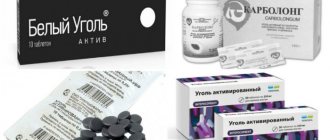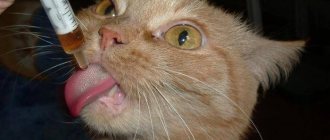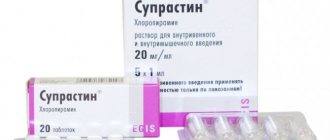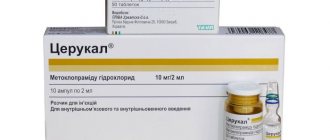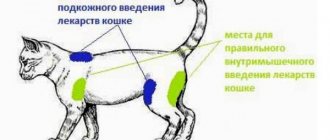Method 1: Add to food
Many owners try to “trick” the cat by slipping it a tablet of food. If the drug is in its entirety, then most likely the animal will spit it out or leave it in a bowl, and safely eat the rest. The solution may be to grind the medicine to a powder state. In addition, two conditions must be met:
- wait until the cat is very hungry (this will slightly dull its taste buds, at least for the first few seconds);
- mix the powder with a small amount of food (after satisfying your hunger with the first portions, your mustachioed friend can leave some of the medicine in the bowl).
Attention: not all medications can be taken with food!
Taking a tablet in food is the most cunning way, but it is not suitable for all medications.
Syringe manipulation
It often happens that a cat is cunning: it eats the food, but the tablet remains in the bowl. In these cases, you can dissolve the tablet in water and use a syringe to inject the medicine into your mouth. This is only suitable for drugs that are approved for mixing with liquid. In this case, you need to monitor the injection dose. It's better to limit yourself to a drop. After all, after strong pressure, the cat will have an aggressive reaction, and it will spend all its energy on escaping. Accordingly, some of the drug will spill, but it is unlikely to be able to calculate how much of the drug got inside. This method is not suitable for medicines with a bitter taste. Once inside, the tablets provoke salivation, which means that a certain part of the medicine will come back out.
If the cat does not eat dry food, you can do the same with liquid food. You should fill only part of the bowl, place the medicine there, watch how the cat empties the contents and then fill the bowl to the optimal level.
Method 2. Give in powder
Most cats are very sensitive to foreign substances in their food and refuse to eat, even going on hunger strike. If this is your case, then try crushing the tablet into a powder and then pouring it into the cat's mouth.
Of course, there is no need to wait for the voluntary opening of the mouth - just place your palm on the pet’s head and squeeze the cheekbones on both sides (from the side of the molars). The animal will reflexively open its mouth, at this moment you need to quickly pour the powder deeper, close its mouth, and hold for 2-3 seconds.
There was something wrong with this food, I'm not happy!
Carrying out the main procedure
After the cat was immobilized, all that was left was to give her an anti-worm tablet. If you have an assistant, then there should not be any special problems, but when you carry out this procedure yourself, certain difficulties are possible. First of all, this is due to the fact that you must have both hands free. To do this, the animal, wrapped in a blanket, blanket or towel, should be placed on the floor and pinched with your knees. At the same time, his head should be directed towards you.
Your hands are free, now you should open the cat’s mouth
Carefully lift her head with your left hand (if you are left-handed, then with your right) and place your index finger on her forehead. In this case, the remaining fingers should be located along the animal’s cheekbones
We move the tips of the index and thumb to the pet’s upper jaw and place them on both sides. Now we lift the animal’s head to the ceiling with our fingers - the mouth will open slightly. At this moment, you need to move your fingers a little inside the mouth so as to move the cat’s lip towards the teeth. As a result, she will lower her lower jaw on her own and in the future will not close her mouth so as not to bite her lip.
If the goal is to give a pill, then the mouth should be open quite wide; in the case of liquid in a syringe, the mouth can be opened only slightly
If the medicine is in tablet form
- So, opening the cat’s mouth, place your index finger between the fangs and press lightly. We hold it in such a position that the animal cannot close its mouth.
- Throw the tablet as far as possible - preferably so that it ends up on the back of the tongue. In this case, the cat will not be able to push the medicine out, and the muscles of the tongue during such an attempt will only push it further into the throat.
- If you are sure that the tablet is far enough away, release your mouth - the cat will close its mouth and swallow the medicine for sure. Otherwise, you should help the animal by holding its mouth closed until you feel that the cat has made several swallowing movements.
Sometimes pets resist and do not want to swallow the tablet, continuing to keep it in their mouth. And to trigger the necessary reflex, just blow into the cat’s nostrils or stroke its neck. After she has taken a few sips, release her mouth and check to see if the pill has actually been eaten. Finally, offer the animal water and feed it - this will allow the drug to pass through the esophagus faster.
It’s very good if you have a pill dispenser in your first aid kit. This is a special tool that significantly facilitates the administration of solid drugs and saves in situations where the owner is simply afraid to insert his fingers into the pet’s mouth. To carry out the procedure, you need to place the medicine in the tablet dispenser, open the cat's mouth and bring the end of the instrument to the back of its tongue. We press the button and the tablet falls out and ends up right in the animal’s throat.
If the drug is liquid
How to give a cat medicine from a syringe? This is somewhat simpler than in the case of tablets.
- We open the animal's mouth slightly - just enough to fit the syringe into it.
- We insert the syringe with the medicine into the mouth, bringing it as close as possible to the inner surface of the cheek.
- We press the plunger, squeezing the drug out of the syringe, stopping from time to time so that the cat can swallow the resulting portion.
It is very important to perform this procedure slowly and not allow the mouth to overflow with liquid.
After the medicine in the syringe runs out, take it out of the mouth and release the cat.
Method 3. Dissolve the tablet in liquid
A cat may spit out a tablet in powder form, although partially, so it is better to first dissolve the powder in a small amount of liquid. You should not add it to drinking water or milk; just dissolve it in 5-7 ml of regular water.
In liquid form, the medicine can be given from a spoon by opening the cat's mouth in the manner described in the previous paragraph. Or draw it into a clean syringe (without a needle), insert the nozzle of the syringe into the side of the mouth between the molars and pour in the contents.
When is syringe feeding necessary?
Force-feeding is, to some extent, violence against the animal, but it maintains strength well and provides the weakened body with nutrients. Syringe feeding a cat is recommended in certain situations:
- for long-term chronic diseases, including oncology;
- if severe exhaustion of the animal is detected;
- after injuries, especially to the head, teeth and jaws;
- during the recovery period after surgery;
- in the process of rehabilitation after strokes, paralysis and neurological disorders;
- small kittens aged 3-4 weeks, not yet capable of eating adult food.
Regime and diet. After consulting with your veterinarian, you should create a suitable diet and feeding regimen.
Suitable foods for sick cats include:
- cat pates from jars and bags;
- dry food granules soaked in warm water until thick sour cream;
- baby meat puree.
- what to feed a kitten up to 1 month;
- why doesn't the cat eat anything?
- how to feed a cat correctly.
Method 4. Put it in the mouth
There are medications that cannot be crushed or given in parts. There is only one way out here - just open the pet’s mouth and put a pill in it. What actions will be required for the cat to reflexively open its jaws is described above. It should only be added that the tablet should be placed as far as possible on the root of the tongue to stimulate the swallowing reflex. Afterwards, also close the pet’s mouth and hold it in this position for 2-3 seconds.
How rough!
Crushed tablet or powdered preparation
If it is necessary to give powdered medicine or it is possible to crush the tablet, then the powder can be diluted with water (in a small amount) and mixed well. There are two ways to give your cat medicine. The first is to place the resulting suspension in a tablet dispenser (it has a compartment for liquid medications) or in a regular syringe without a needle. Then, according to the principle described above, placing it deep in the mouth, inject the contents into the cat’s throat.
The second method only works if the resulting liquid tastes sweet (yes, this also happens). The solution is simply poured into an empty bowl or onto food and offered to your pet. It is very important that the medicine is not bitter, otherwise, in the future, the cat may begin to refuse food.
Any of the proposed methods for giving cats different tablets is effective and proven in practice. By choosing the most suitable one, you can cope with the task without visiting a veterinary clinic.
Method 5. Use a tablet dispenser
A special device - a tablet dispenser, or piller - will help make the task of swallowing medicine easier. In appearance and principle of operation, it resembles a syringe, but instead of a needle it has a long soft tube. To give a pill to a cat, simply insert the medicine into the tip of the tube, open the animal's mouth, and then press the plunger. Under the influence of air, the drug will reach its destination.
Note: such a device is sold at a veterinary pharmacy or pet store. However, you can make it yourself by cutting off the bottom of a plastic syringe of the required diameter.
We use a tablet dispenser
A very obedient cat who loves pills
How to protect your hands
Since taking medications is a lot of stress for the animal, aggressive behavior is possible. In this case, the pet can injure the owner.
The main difficulty is pushing the tablet deeper. If you hesitate, the cat will easily bite your finger; his teeth are quite suitable for this. This is where an introducer can help you. This is a small pill “syringe” that helps you quickly place the pill at the very base of your tongue. So the cat will be forced to swallow it.
Giving a cat a pill once is not that difficult. Problems begin when treatment requires constant medication. In this case, you can entrust the care of the cat to veterinarians. Our clinic operates a 24-hour hospital, where doctors constantly look after your pet. The hospital helps the animal recover after surgery and take all prescribed medications on time.
Advice: for prevention, anthelmintics are given to cats 2 times a year, and if there is a high risk of infection - once every 3 months. If the tablets do not act on all phases of worm development, this should be done in 2 doses with a break of 10-14 days in order to destroy both adults and eggs.
Pregnant cats are given anthelmintic tablets in the last third of pregnancy, and nursing cats only 14-21 days after birth (and only if this is permitted by the instructions). The best option is to take an anthelmintic drug 2 weeks before mating. Kittens can be given such medications no earlier than 21 days after birth.
The dose of the drug is calculated per kilogram of weight, and it is individual for each product. All necessary information can be found in the instructions for the tablets. For example, “Prasitab” based on praziquantel and pyrantel pamoate is given orally once according to the scheme - 1 tablet per 4 kg of weight.
It is better to do this in the morning during feeding. For convenience, you can crush the tablet and pour the powder into the cat’s mouth or dilute it in water and pour it into the cheek. Most anthelmintic drugs are formulated so that they do not require prior dieting, fasting, or laxatives. They are produced in the form of tablets, pastes, suspensions, drops.
How to get a cat to swallow a pill
Some mustachioed four-legged animals manage to hold the tablet in their mouths for some time and then spit it out, therefore, having closed the cat’s jaws, you need to make several stroking movements along the esophagus - from top to bottom along the front surface of the animal’s neck. Another way is to blow into your pet's nose. This will also lead to a swallowing reflex. You should definitely check the result by examining the sly man’s oral cavity.
After the treatment is successfully completed, do not forget to caress your pet and please him with something tasty. If for some reason it is not possible to give the medicine, you need to contact a veterinary clinic.
Third method
If the animal behaves too aggressively, breaks out and bites, and you can’t give the kitten a pill, you can use one trick. To do this you will need a towel, or blanket, or any thick fabric. A kitten or adult cat is wrapped in it so that only the head remains outside. This bundle can be placed on your lap or on your left hand, so that the muzzle is facing the owner.
Of course, all this time the kitten will be trying to free itself from captivity, so everything needs to be done quickly. The next task is to open the pet's mouth. We lift his head with one hand and press with our finger in the place behind the fangs - this will force him to open his mouth. Now you need to quickly place the tablet there, preferably further and deeper - at the root of the tongue. We make several stroking movements on the throat and check whether the tablet is swallowed or not.
This method is guaranteed to be very disliked by your pet, because cats hate it when something is done to them against their will. On the other hand, this way you can quickly and conveniently give any pill, and also protect yourself from the sharp claws of an animal. Regardless of which method is chosen to give the pill to a kitten or cat, it is not always possible to do it the first time. Most often, the second or third attempt ends successfully. In this, as in any matter, practice and skill are needed.
Don't forget to praise the kitten, caress it and treat it with something tasty (if this is not contraindicated!). Do this every time after this procedure to develop a pleasant association in your pet and simplify the whole process in the future.
Still have questions? You can ask them to our site's in-house veterinarian in the comment box below, who will respond to them as soon as possible.


